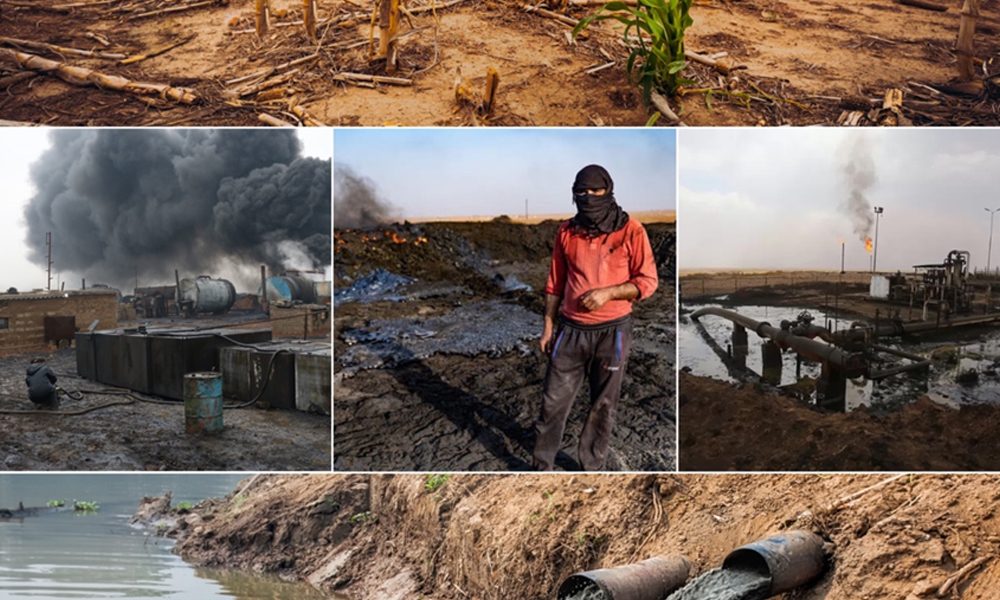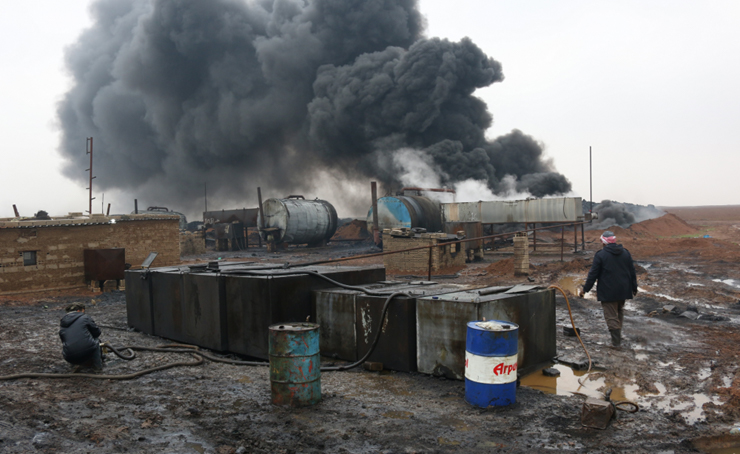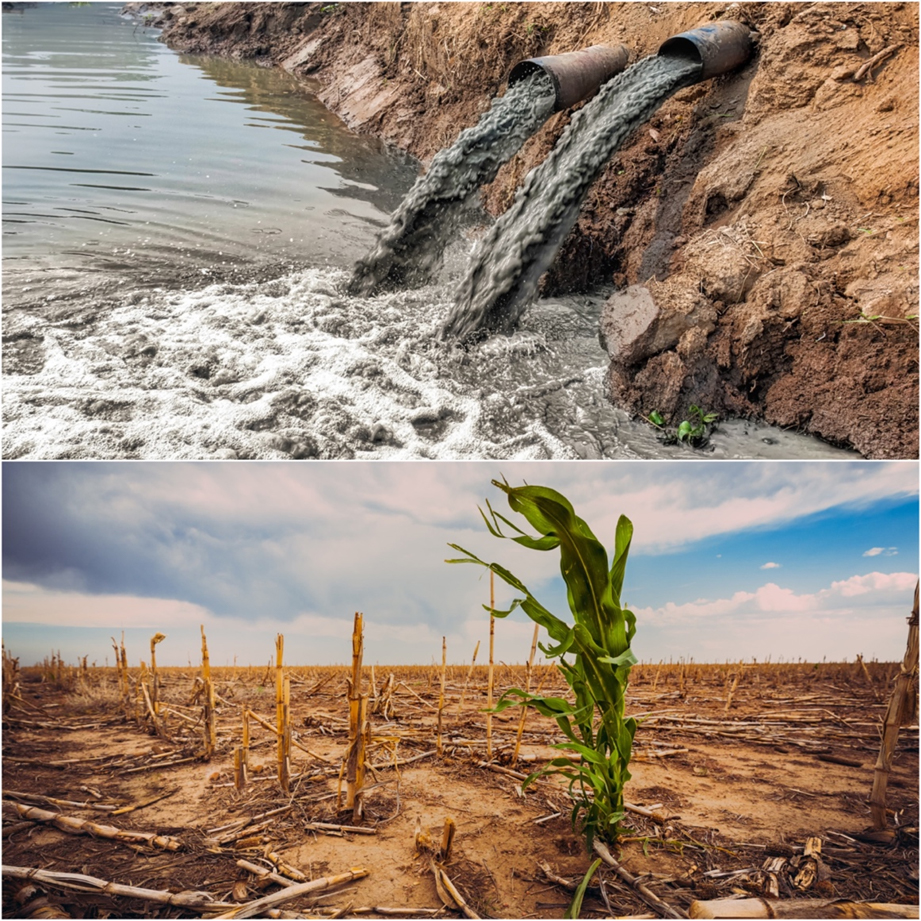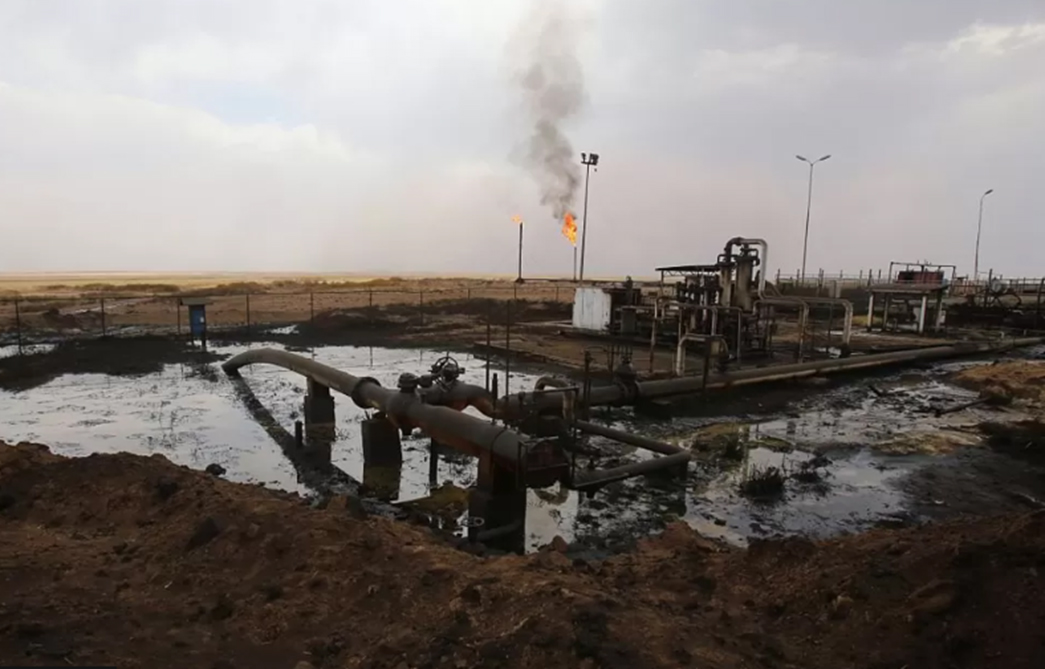
Environmental and Health Impact of the Oil Industry in Northern Syria
- Home
- /
- Media Hub Posts
- /
- Environmental and Health Impact...
The humanitarian catastrophe in Syria is well documented, but the impact of the Syrian crisis on the environment and population health is not discussed frequently enough.
Much of this devastation comes from the energy sector. Energy infrastructure, including the oil fields themselves, have been a frequent target of military attacks, from parties either seeking to claim the benefits available, or to deny others access to them.
The resulting damage from physical attacks has led to widespread leaks and contamination of soil, air and water sources. In addition, the unsophisticated operating practices, devoid of any health and safety considerations, used by those trying to produce, transport and refine what product remains, leads to unimaginable environmental harm. In particular, the hundreds of makeshift facilities across the country lead to devastating environmental damage, effecting water quality, agricultural production, air pollution and community health.

This has wrought devastation across the country, but not enough is being done to shed light on this issue, or to address it.
This @Syria Report article published this week, highlights the problem, citing on the ground testimony as well as comprehensive research drawn from publicly available data. Unfortunately, challenges in accessing many of these locations in Syria make it difficult to estimate the extent of the situation; however, it is clear that what we do know only scrapes the surface.

It explains that air, water and soil pollution is due to primitive oil extraction and oil refining methods, oil spills, oil fires, and unsafe disposal of oil waste products from these illegal and unregulated activities. These practices have resulted in ecosystem destruction, lower crop yields, the death or contamination of livestock, and crucially, increasing cases of cancer, miscarriages and respiratory diseases.

A solution needs to be found and could involve the following:
- Remove Syria’s oil and gas industry from the cross hairs of military conflict by bringing it under an international umbrella that ensures a fair, legal and transparent share for all Syrians.
- Allow International Energy Companies, with the capacity and expertise to implement best industry practice, to return to operations, begin the clean-up, mitigate on-going health concerns and help to prevent further damage to the country’s environment.
- Allow the transparent sale of oil at full market prices and through an internationally approved process via targeted sanctions relief, the proceeds of which can be distributed for humanitarian, environmental and health initiatives – under appropriate oversight.
- Rebuild energy infrastructure that is fit for purpose and can contribute to a cleaner future for Syria.
All these elements are incorporated into Gulfsands’ humanitarian and economic stimulus initiative, Project Hope.
We call for greater attention and action from international stakeholders on this important matter and ask for support and help in developing Project Hope for the benefit of all Syrians.
In an age where the world is focused on the environmental impact of our actions, countries like Syria must not be left behind.
Stay Up to Date
Connect with us on LinkedIn and Twitter




